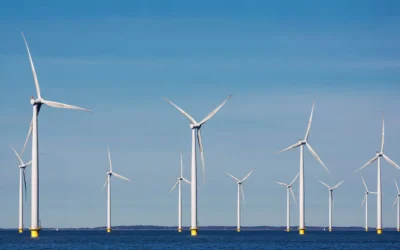
Today’s article aims to offer insights into possible consequences on the EU-USA bilateral relations, trade and even economical aspects.
As Donald Trump positioned himself for a return to the White House, Europe finds itself grappling with economic uncertainty and political fragmentation. The policies proposed by the former U.S. president, if implemented, could exacerbate these challenges, leaving European leaders scrambling to respond to a cascade of geopolitical and economic shocks.
Economic Consequences: Tariff Wars and Trade Tensions
One of the most immediate concerns for the European Union (EU) is Trump’s proposed 10% blanket tariff on all imports, alongside a potential 100% levy on foreign-made vehicles. According to research by the London School of Economics, such measures could shave 0.1% off the EU’s GDP, with Germany—whose export-heavy economy relies heavily on the U.S. market—taking a disproportionate hit. German automakers, already vulnerable due to their reliance on the hybrid and electric vehicle (EV) sector, could face increased pressure from the combination of U.S. tariffs and growing competition from Chinese manufacturers.
The EU’s hybrid and EV exports have grown substantially, rising from just 2% of total exports in 2017 to 26% in 2023, valued at nearly €7 billion. However, the U.S. Inflation Reduction Act (IRA), enacted in 2022, has bolstered American EV production with over $220 billion (€202 billion) in clean energy investments. This law has spurred a 55% surge in sales of domestically produced EVs, aided by tax incentives of up to $7,500 (€6,877) for new vehicles. If Trump rolls back these subsidies while implementing harsh import tariffs, European manufacturers could lose market share to subsidized U.S. counterparts.
Strategic and Defence Challenges
Trump’s proposed foreign policy shifts could also strain Europe’s security framework. His calls for European NATO members to shoulder more of their defence spending would reignite debates over military burden-sharing. While many EU members have begun meeting their commitment to allocate 2% of GDP to defence, their collective defence spending of $400 billion still pales in comparison to the U.S. total of $755 billion.
Europe’s most pressing concern lies on its eastern flank, where Ukraine’s ongoing war with Russia has created both humanitarian and strategic challenges. Trump’s ambivalence toward continued U.S. military support for Ukraine could force Europe to step into a leadership role in the conflict. While the EU has the financial capacity to provide Kyiv with the €40 billion annually it requires to sustain its defence—equivalent to just 0.2% of the bloc’s GDP—it lacks the military hardware and logistical capabilities Washington currently provides.
The geopolitical rift would likely deepen divisions within the EU. Member states like Hungary and Slovakia, which have shown sympathy for Russian President Vladimir Putin, could block consensus on sanctions or military aid. Simultaneously, far-right parties in France and Germany are advocating for a softer stance toward Moscow, further complicating efforts to maintain a united European response.
Investors Eye U.S. Market
Trump’s protectionist trade policies could accelerate a trend among European entrepreneurs to invest in the U.S. Italian businesswoman Elyn Flyger, whose AI-driven energy firm Pinpoint is based in Modena, noted the attractiveness of the U.S. market despite the political uncertainties surrounding the upcoming election. “The ball is kind of rolling,” Flyger remarked, “and no administration can stop this.”
However, European policymakers remain apprehensive. Should Trump succeed in dismantling the IRA or imposing punitive tariffs, it would risk destabilizing the nascent green technology market, both in the U.S. and Europe, while undermining efforts to achieve global climate goals.
In conclusion, Europe’s capacity to weather a second Trump presidency will depend on its ability to unite in the face of economic and strategic challenges. Internal divisions, coupled with weakened leadership in key nations like Germany and France, threaten to undercut the EU’s response. The stakes are high, with transatlantic trade, security, and environmental policies hanging in the balance.
For Europe, the return of Trump signals a critical test of resilience, unity, and adaptability in an era of heightened global uncertainty.
References
Briancon, P. (2024, November 06). Breakingviews: Europe is unprepared for the Trump storm. Retrieved from Reuters: https://www.reuters.com/breakingviews/europe-is-unprepared-trump-storm-2024-11-06/
Monte, M. (2024, November 04). Import taxes and American-made cars: How the US election could impact Europe’s green economy. Retrieved from EuroNews: https://www.euronews.com/green/2024/11/04/import-taxes-and-american-made-cars-how-the-us-election-could-impact-europes-green-economy
Photo:
https://foto.wuestenigel.com/wp-content/uploads/api2/businessman-standing-in-front-of-flags-of-european-union-and-usa.jpeg



